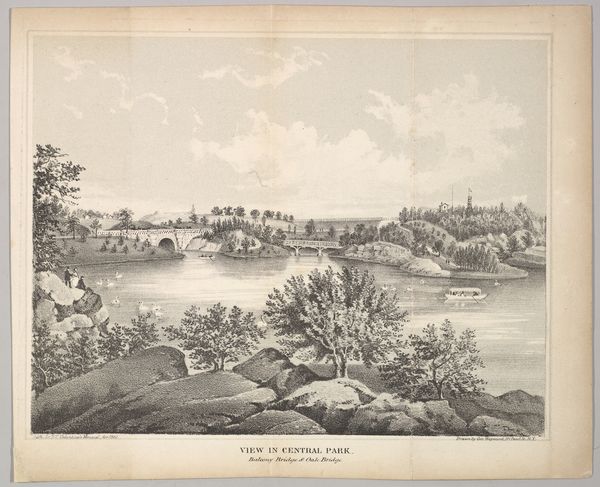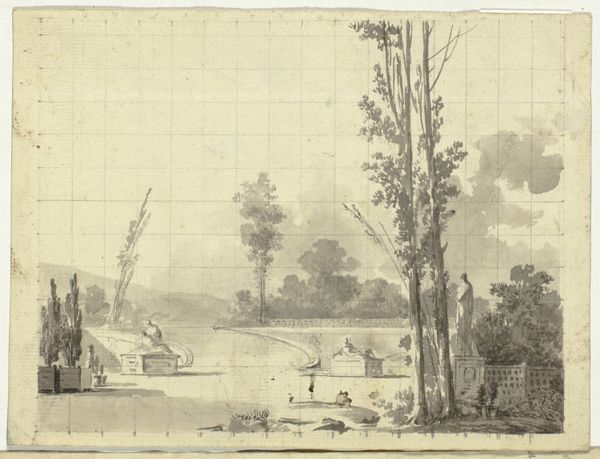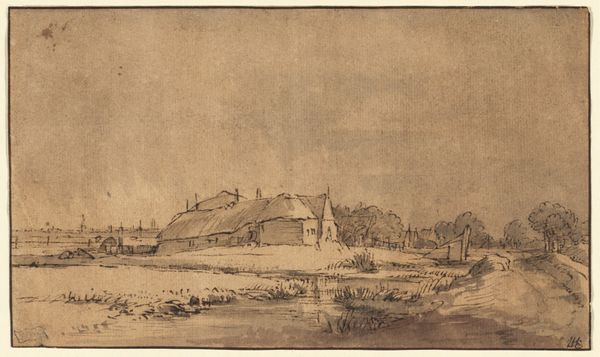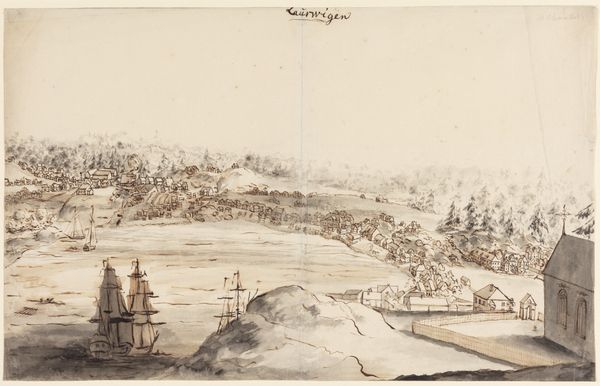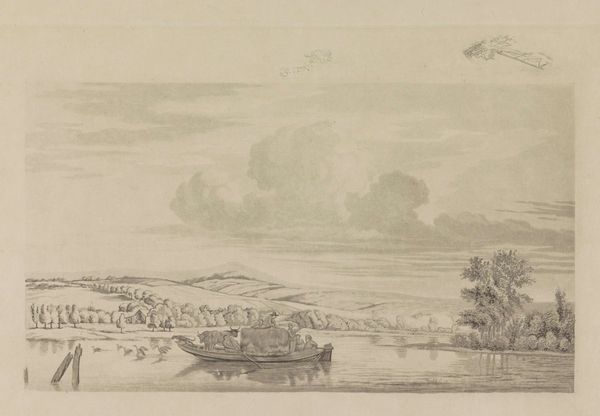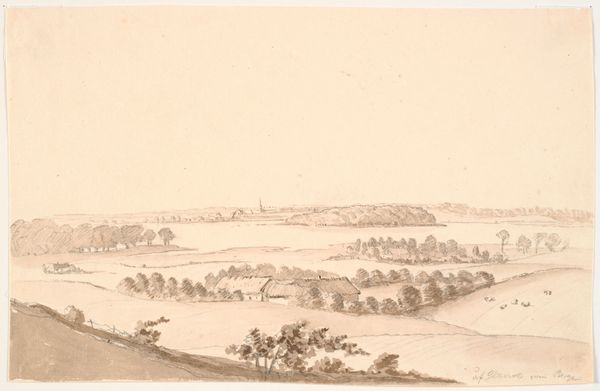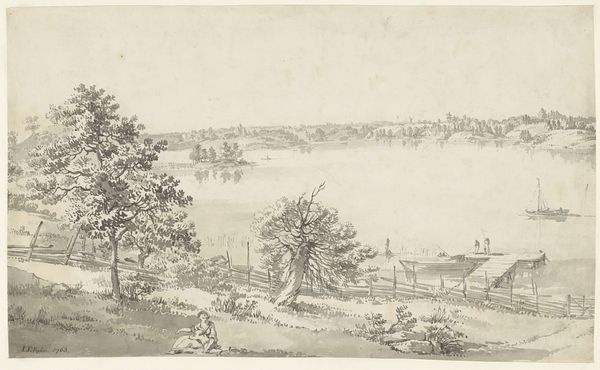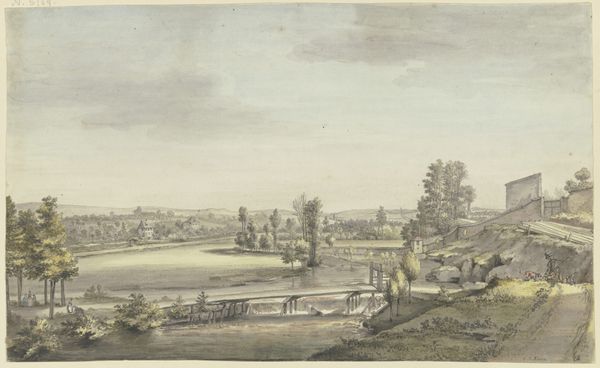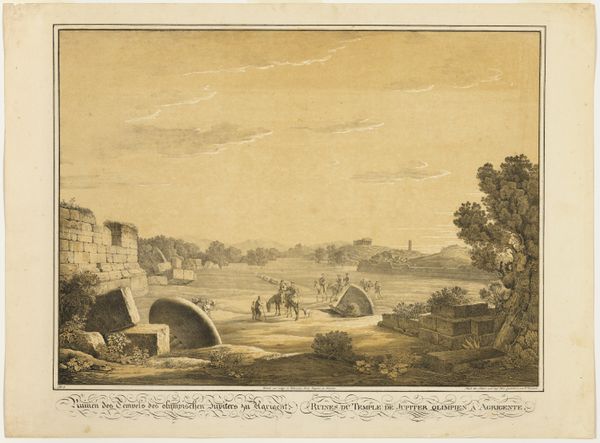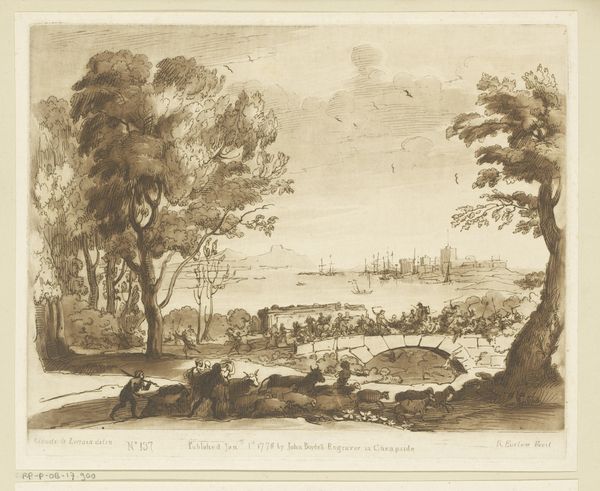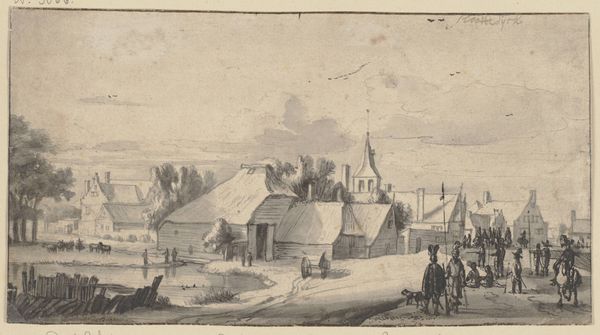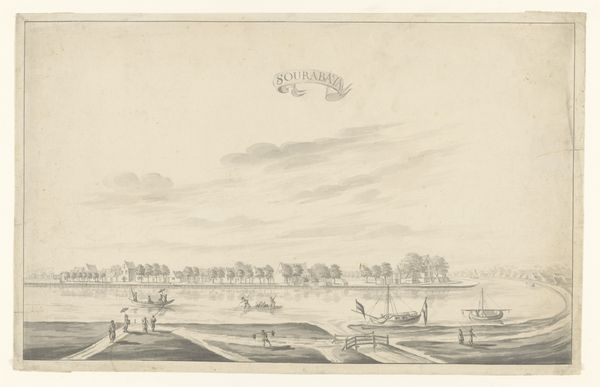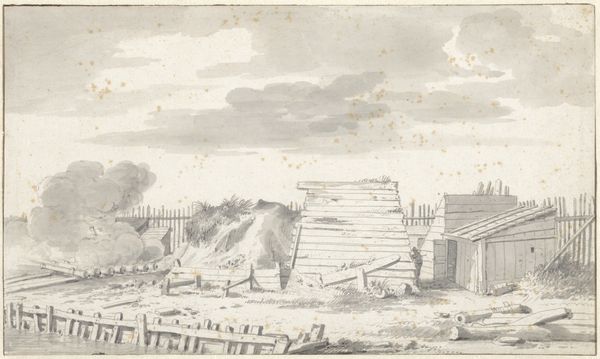
Study for "View of Springfield on the Connecticut River" c. 1819
0:00
0:00
drawing, pencil
#
drawing
#
landscape
#
romanticism
#
pencil
#
watercolor
Dimensions: sheet: 24.92 × 37.78 cm (9 13/16 × 14 7/8 in.)
Copyright: National Gallery of Art: CC0 1.0
Curator: This pencil and watercolor drawing is entitled "Study for 'View of Springfield on the Connecticut River'" created around 1819 by Alvan Fisher. It gives a beautiful sense of early 19th century New England. Editor: It has such a tranquil quality. The soft gray washes and delicate lines create a hazy, almost dreamlike atmosphere. Everything feels still and a bit melancholy. Curator: Fisher was an early proponent of American landscape painting, setting the stage for later artists like the Hudson River School. He spent much of his time capturing scenes of rural life and expanding American territories. Consider this an ideological painting, presenting the landscape as both abundant and benign, perfect for settlement and development. Editor: Looking at the image, the bare tree on the left immediately evokes themes of transition and perhaps even a sense of vulnerability, like a representation of winter contrasting with the life and vibrancy of the trees along the river. Curator: That bare tree also provides a clear compositional framing device. I would contend that his intention here was to emphasize the tamed, useful landscape on offer to his generation rather than any potential melancholy associated with seasonality or transition. Editor: Perhaps. But consider the prominent placement of the church spire across the water. Its reflection is only partially seen, yet the promise of that sacred symbol hovers over the land, implying a spiritual dimension interwoven into the settlement’s ambition. Curator: That spire and other architectural features on the horizon line help reinforce a narrative of progress. It is not just untamed wilderness, but rather a wilderness in transition that is inviting civilization in, a testament to American ambition in the period. Editor: Indeed. Yet it makes me consider those who lived here previously; their absence is loud. It feels significant. Perhaps there's something of a lament woven into even celebratory depictions of landscape, a knowledge of what is being replaced by this growth. Curator: Perhaps your view carries some merit, given that cultural memory and imagery are inevitably layered over time. For me though, the narrative that resonates is primarily one of opportunity and burgeoning potential within the new republic. Editor: It's been fascinating to contemplate the array of symbols woven through this view of Springfield with you and reflect on its complex place in American art history.
Comments
No comments
Be the first to comment and join the conversation on the ultimate creative platform.
